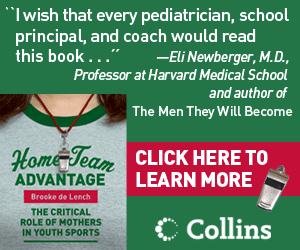 Young athletes attempting to lose weight and body fat or gain weight and muscle mass may resort to unhealthy weight-control practices.
Young athletes attempting to lose weight and body fat or gain weight and muscle mass may resort to unhealthy weight-control practices.
If your child plays a sport that emphasizes thinness, leanness, and/or competing at the lowest possible weight, you need as their parent to be on the lookout for any of the following practices:
- food restriction
- vomiting
- overexercising
- diet-pill use
- inappropriate use of prescribed stimulants (e.g. Ritalin) or insulin
- nicotine use
- voluntary dehydration.
Voluntary dehydration practices include:
- fluid restriction
- spitting
- use of laxatives and diuretics
- rubber suits
- steam baths
- saunas
Adverse effects
Athletes may practice weight-control methods only during the sports season or year-round. These practices may impair athletic performance, increase injury risk, and result in the following medical complications:
- delayed physical maturation or permanent growth impairment;
- oligomenorrhea (infrequent menstruation) and amenorrhea (no periods) in female athletes;
- development of eating disorders, such as anexoria and bulemia;
- increased incidence of infectious diseases;
- changes in cardiovascular, endocrine, gastrointestinal, renal and thermoregulatory systems; and/or
- depression.
Healthy weight loss tips
Athletes usually require a diet higher in calories than non-athletes. The actual number of calories your child needs to consume depends on numerous factors, including body composition, weight, height, age, stage of growth, and level of fitness and intensity, frequency, and duration of exercise activity.
- Talk to your child about the harmful effects of unhealthy weight-loss practices and that too-rapid weight loss or by restricting calories, lean muscle mass will be lost, which can negatively affect athletic performance.
- Tell your child that weight is not an accurate indicator of body fat or lean muscle mass:
- use of body mass index (BMI) in athletes not recommended because it falsely classify some children, particularly adolescents, who are of normal fatness as being overweight;
- BMI can also be falsely elevated in an athlete or nonathlete with a muscular build as well as in someone who has a high torso-to-leg ratio;
- body composition measurements (body fat and lean muscle mass) in addition to height-for-weight for age measurements can be much more useful in determining an athlete's physical status; lean muscle mass should be greater than 25th percentile in most well-nourished athletes
- Gradual weight loss (not more than 1.5% of total body weight or 1 to 2 pounds each week) is best.
- Ideal way to lose 1 pound of fat in one week is for your child to consume 1,750 fewer calories per week and burn 1,750 more calories per week through exercise.
- Appropriate diet for most athletes: 2,000 calories per day divided as follows:
- Carbohydrates: 55% to 65%
- Protein: 15% to 20%
- Fat: 20% to 30%
- Consultation with a registered dietician with experience working with athletesis recommended.
- Except in sports requiring mandatory weigh-ins, your child's coach should not be discussing weight or weight loss with your child:
- Coaches may inappropriately focus on weight instead of body composition and performance
- Most coaches do not have adequate training in nutrition to counsel athletes about weight loss
- When coach mentions weight-loss, athlete is much more likely to begin harmful weight-loss practices instead of consulting with appropriate professionals
- In sports with mandatory weigh-ins:
- Child should be discouraged from using harmful weight-loss practices
- Child should be encouraged to compete at weight that is appropriate for age, height, physique, and stage of growth and development.
- Weigh-ins should take place in manner that encourages good hydration and competing at healthy weight
- Mat-side weigh-ins immediately before matches are best for insuring good hydration, prevents wrestler from dehydrating and weighing at one weight, and then rehydrating and wrestling at a significantly higher weight, and preventing wrestlers from competing when weak from dehydration and avoiding temptation of dehydrating to the point that it is life threatening.
Healthy weight gain tips
- To build 1 pound of muscle in 1 week, a child needs to
- consume 2,000 to 2,500 calories more than he burns;
- consume 1.5 to 1.75 grams of protein per kilogram (2.2 pounds) of body weight per day (rarely a problem, as the average American diet contains 2 to 3 times that amount of protein);
- participate in strength training (8 to 15 repetitions per set; young athletes should lift lighter weights with an increased number of repetitions under supervision of trained adult).
- If desired weight gain not achieved, dietary fat should be increased (studies of elite athletes report dietary fat intakes ranging from 29% to 41% in males and 29% to 34% in females).
- Gradual weight gain is best; gain in excess of 1.5% of body weight per week may result in unwanted fat.
Source: American Academy of Pediatrics Policy Statement, "Promotion of Healthy Weight-Control Practices in Young Athletes." Pediatrics, Vol. 116, No. 6; 1557-1564 (December 2005).
Revised October 2, 2011









